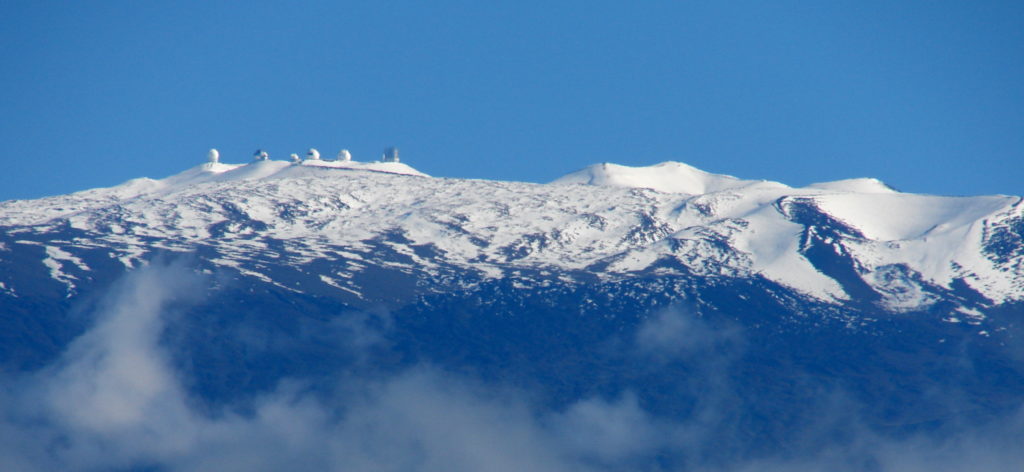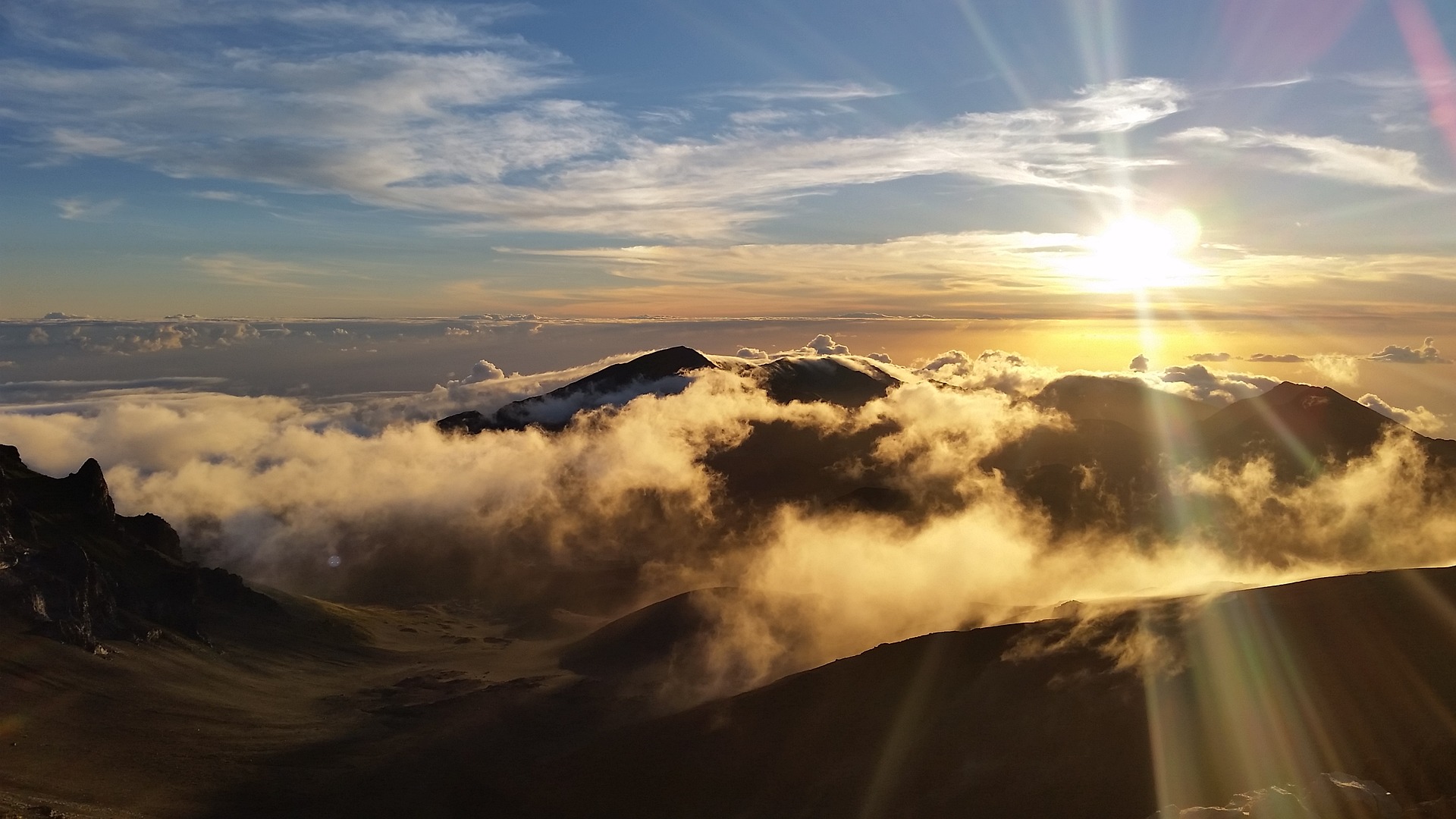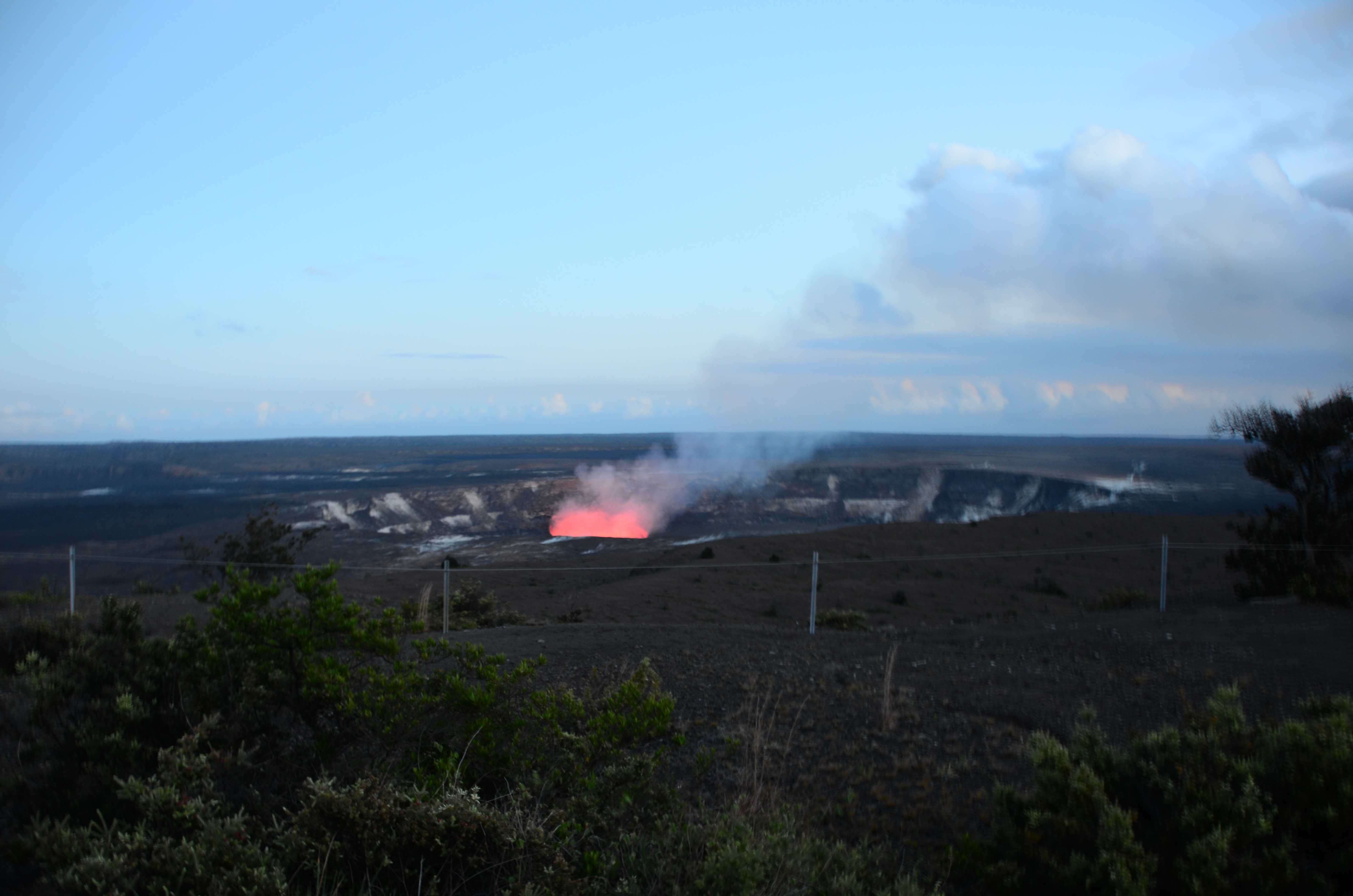Many visitors wonder if they’ll see a Volcano in Hawaii or how volcanoes influence the islands’ geography.
Volcanoes created each of the Hawaiian Islands, and the history behind them is quite fascinating.
My curiosity about the islands I live on led me to research how and why these islands formed. It’s pretty amazing to think that I am writing this post as I sit on the top of an extinct volcano.
How Volcanoes Formed the Hawaiian Islands
Hawaii is one of the most remote island chains in the world. The islands we stand on are just the tops of massive underwater volcanoes and are part of over 80 submarine volcanoes.
These islands began to form over 70 million years ago, and the chain is still changing.
Each volcano formed over a geologic hotspot, which is a place where magma travels to the Earth’s surface. The tectonic plate sitting over the hotspot has been moving northwest over time. Because of this shift, the Hawaiian islands are arranged in order of their age.
The oldest island is Kauai to the northwest, and each island gets younger until you get to the Island of Hawaii (known as the Big Island). Hawaii Island is the youngest Hawaiian island with the most volcanic activity.
This age difference explains the striking contrast between Kauai and Hawaii Island. Lush and green with its multicolored sea cliffs, Kauai is 5 million years old. But Hawaii Island is less than 500,000 years old, a relatively young piece of ground with black rock landscapes and a continuously erupting volcano.
A New Volcano in Hawaii, a New Island Forming
As the plate continues to move northwest, Hawaii Island will move away from the hotspot. Then, a new volcanic island will form in its place.
We already know which island it will be. Kamaʻehuakanaloa (formerly called Loihi) is an active submarine volcano that will eventually form another island (or become fused with Hawaii Island).
Kinds of Volcanoes: Active, Dormant, and Extinct
Though every island in Hawaii was once a volcano, some are now considered extinct, which means they’ll never erupt again.
If a volcano has erupted in the past 200 years, it’s considered active.
Finally, dormant volcanoes have not erupted within the last 200 years but are still monitored because they could erupt again. Dormant volcanoes are still technically active, so they’re often grouped together in official classifications.
Is There an Active Volcano in Hawaii?
In Hawaii, you’ll find three active volcanoes and three dormant volcanoes. All of them are on the Island of Hawaii except for one: Haleakala on the island of Maui.
We’ll highlight these fascinating wonders below and share great ways to learn more about them.
Hawaii Island Volcanoes
Together, five volcanoes make up the Island of Hawaii (the Big Island): Kohala, Mauna Kea, Hualalai, Mauna Loa, and Kilauea. At Hawaii Volcanoes National Park on the Big Island, you can take a guided tour that tells you all about the volcanoes and their history.
Kohala is the oldest volcano on the island and makes up the northern part of the Big Island. Kohala is extinct, last erupting 60,000 years ago. After this eruption, a portion of the volcano collapsed into the ocean, which made the island smaller and created the cliffs of Pololu and Waipio Valleys.
Mauna Kea is dormant and is the highest Hawaii volcano on the Big Island. It most likely last erupted between 6,000 and 4,500 years ago.
You probably have heard of Mauna Kea because many tourists visit its visitor center for the free public stargazing programs. Or, you can book a professional tour to drive you to the very top of Mauna Kea.

Kilauea is the youngest and most active volcano on the Big Island. It continuously erupted from 1983 to 2018 and has since erupted every few months. When you hear about lava flows on the news, that lava is coming from Kilauea. Sometimes the lava flow or glow is visible to people; sometimes it’s not.
Hualalai is the active volcano you probably hear about the least. Lava rock from its last eruption in 1801 can be found under the Kona International Airport.
Mauna Loa is the largest active volcano on Earth. Meaning “Long Mountain’ in Hawaiian, Mauna Loa covers half of the Big Island. It is also one of the world’s most active volcanoes, having erupted 33 times since 1843. Its last eruption was in 1984 – the lava came within 4.5 miles of Hilo, the largest city on the island! Experts carefully monitor Mauna Loa and consider it active.
Maui Volcanoes
After the Big Island, Maui is the next youngest island in the Hawaiian chain. It has one dormant volcano that is still monitored for activity.
Haleakala is a dormant volcano that forms most of the island of Maui. It last erupted between 400 and 600 years ago. So if you visit Maui, you’ll technically see an active volcano in Hawaii, but it won’t be erupting like Kilauea sometimes does.
Many visitors come to Haleakala to view its spectacular sunrises. Tour companies will take you up before dawn, and then you can ride a bike down the mountain after daybreak.

How to See a Volcano in Hawaii
I think that knowing a bit of history about a place can make a difference when you come to visit. If you want to view one or more of these volcanoes, talk to our travel experts at Hawaii Aloha Travel. They can arrange tours that will enhance your knowledge of each volcano in Hawaii and give you the best views.




